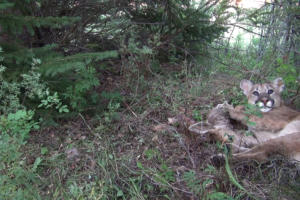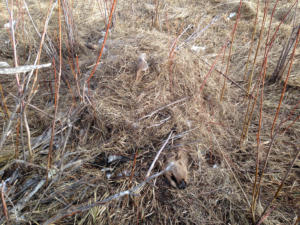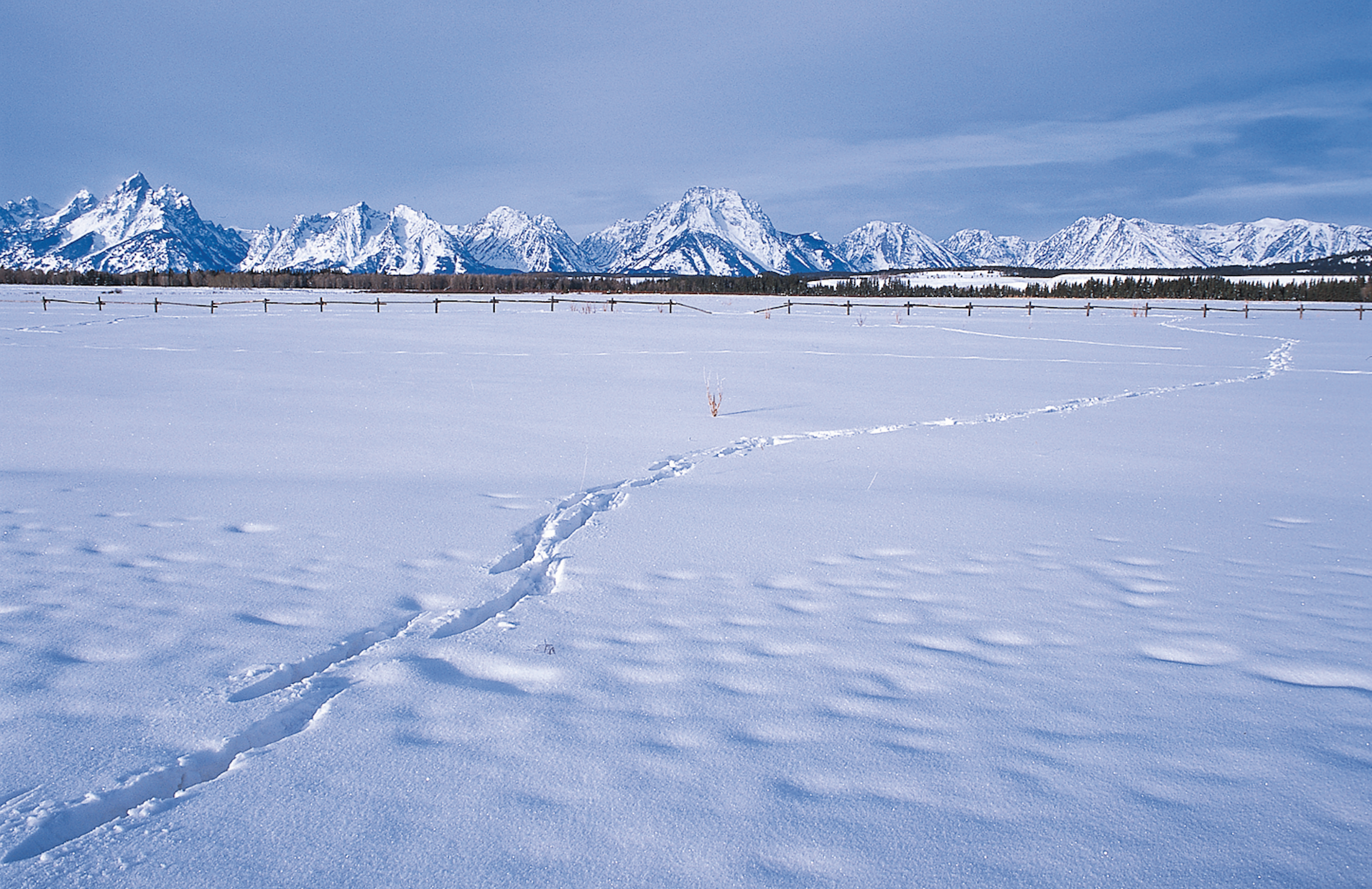
Young male mountain lion with a mule deer fawn killed by his mother.
Among my favorite activities is investigating mountain lion kill sites—meaning the work of actually going into the field and finding the remains of prey killed by mountain lions. We just published new research in the Journal of Mammalogy that shows that these expeditions in search of prey remains are not just enjoyable, they are also the best way to study carnivore foraging behaviors.
Every kill site is different, and some are tough to find. But over the years, I’ve begun to better predict where a cat might feel secure enough to feed and hide the remains of their prey. Flies are a great clue too—the sound and sight of them have often drawn me to a hidden carcass or a subtle area blood-flecked and sprinkled with tiny bits of tissue and bone easily overlooked. Magpies and eagles are even better, their vocalizations provide guidance from afar and if you can spot them on the ground, then you’ve found your kill.
Modern research on mountain lions relies heavily upon GPS technology built into collars. Location data are transferred via satellites to our computers while the collar is still on the cat, thus we can follow them in near real time. It’s absolutely amazing. When we see a group of location points on a map, we know a mountain lion has remained in place for some duration—what that animal was doing can only be determined with certainty by visiting the site to see what happened (and even then its not certain because we rely upon tracking skills to interpret signs; tracking will always be an imperfect art and science).

An elk killed and cached by a female mountain lion in northwest Wyoming.
Now it might be apparent to those who know me—that studying mountain lion kill sites brings together my dual interests in wildlife tracking and mountain lions. Its as if this work were created with me in mind. For the most part, our research teams (including those with professional tracking skills: Casey McFarland, Neal Wight, Matt Nelson, Max Allen, Michelle Peziol, Connor O’Malley, Anna Kusler, Blake Lowrey, and myself) spend almost all of our time visiting these sites in the field—its time consuming work, but I believe, well worth the effort.
Other researchers, however, invest elsewhere, and rely upon statistics and mathematics to measure kill rates (how often a carnivore kills prey) and even prey selection (what carnivores eat). They do this by visiting just a sample of locations in the field and then extrapolating what they observed to every area a mountain lion or other carnivore stopped and spent time, with the help of complex mathematical models. This approach is appealing because it saves lots of time in the field, and therefore money. Thus, the mathematical method has spread rapidly across the globe where it is being applied to more and more carnivore species.
My coauthors, Blake Lowrey and Heiko Wittmer, and I tested this mathematical approach to estimating kill rates against our own heavy-fieldwork approach, in which we try to visit every location a mountain lion stops for 4 or more hours on the landscape (we used to do 2 or more hours but 2-hr sites yielded very little prey data). We did this for 3 different study systems in which we’ve worked (Chilean Patagonia, Northern California, western Colorado), and found that the mathematical approach yielded unpredictably, inaccurate and imprecise estimates of kill rates. This was mostly due to the fact that carnivores are inconsistent in how they feed. They eat prey of different sizes, so the associated time it takes to consume their kills is highly variable. Mountain lions and other carnivores also have their kills stolen by bears and condors, and thus they sometimes feed for very short time periods from a large animal they killed. This confuses computer models, which tend to predict that places where a mountain lion spent little time must have been a place where it rested rather than killed prey.

An adult female mountain lion stands over an 11-month old elk calf she killed and cached.
Fieldwork is not just enjoyable, its justifiable. Spending time in the field remains our best approach to studying carnivore diets and kill rates. This is excellent news for those of us that have invested so much time in learning tracking skills, and so delight in forays afield where we apply our trade.





